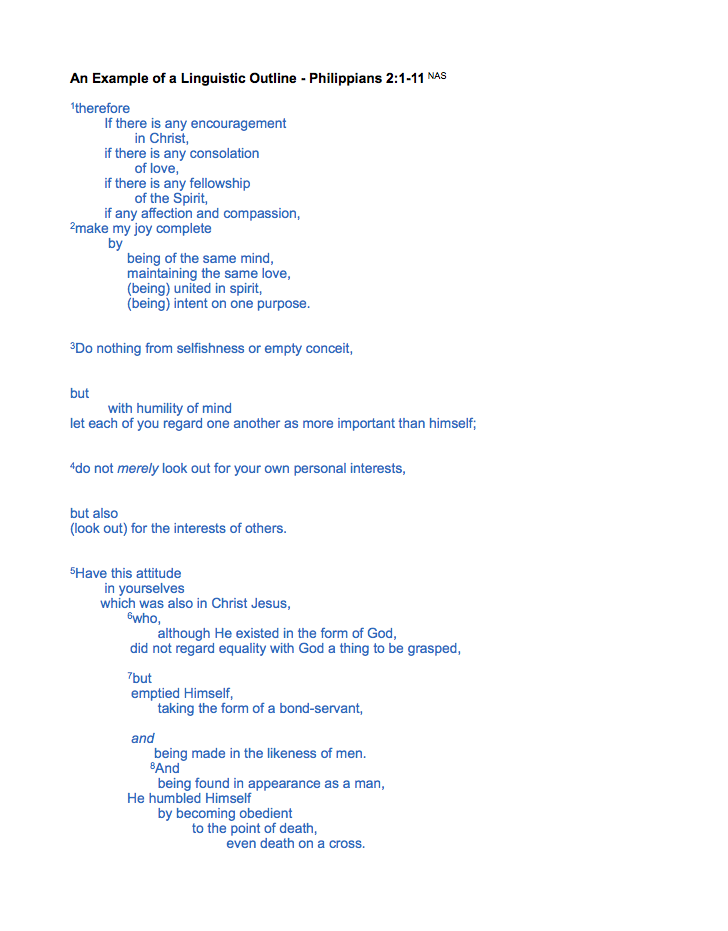…we do not preach ourselves but Christ Jesus as Lord, and ourselves as your bond-servants for Jesus’ sake.
(2 Corinthians 4:5)
As we explore God’s word verse by verse we preach Christ.
Listen to a sermon in our archives and you’ll notice:
1. Engaging, practical, Bible filled teaching.
2. Teaching that focuses on Jesus and His perspective. We try to get to know Jesus’ heart as found in each passage in the Bible. This results in worship, the primary goal of every teaching.
3. An engaging style representing the feeling and passion of the text and the heart of God.
4. Teaching that gets to the point. We quickly bring out the text’s practical applications for relationships and daily life. We will not waste your time with irrelevant trivia and religious, feel good mumbo jumbo.
5. Practical applications relevant to the circumstances and challenges of your life.
6. A big emphasis on how to live the passage, not just what we are to do.
7. A reminder in every sermon of the good news of total forgiveness for everything through Jesus being punished in our place.
8. We teach through the Bible book by book, sentence by sentence, phrase by phrase. Even in topical teachings we use passages interpreted and applied in their context.
9. We make the main points of the passage the main points of the sermon. The teacher doesn’t just focus on what he wants to teach. This brings biblical balance to our teaching diet.
To do this, the teacher prayerfully studies to discover, and then teaches from, an outline that identifies the main phrases, subordinate phrases, and how they are linked in the flow of thought. We call this diagram a linguistic outline. The use of the original languages help ensure accuracy. We’ve included an example at the end of this article. The main phrases are on the left, the subordinate phrases are indented, and the linking words and flow of thought are easy to see. The main points now are plain whether the teacher likes them or not (Sometimes the main points may be at the end of a sting of phrases but these also are easier to spot in a linguistic outline).
10. We pay close attention to the historical and biblical context of each passage, but will not bore you with unnecessary trivia. Context is king when it comes to accurately interpreting and applying the Bible.
11. We also pay attention to the literary style or genre of each passage and the covenant in which it is found.
12. The use of other passages in the Bible that speak about the same topics as the passage we are studying help ensure biblical balance.
13. Printed sermon notes to take home are distributed. They can also be found in pdf form on the sermons page of the website.
14. All of this study is done prayerfully seeking the heart of God during study as well as a Spirit led delivery.
The Use of Linguistic Outlines in Teaching
This is a passage in the letter to the Philippians we will use as an example for a linguistic outline.
1 If therefore there is any encouragement in Christ, if there is any consolation of love, if there is any fellowship of the Spirit, if any affection and compassion,
2 make my joy complete by being of the same mind, maintaining the same love, united in spirit, intent on one purpose.
3 Do nothing from selfishness or empty conceit, but with humility of mind let each of you regard one another as more important than himself;
4 do not merely look out for your own personal interests, but also for the interests of others.
5 Have this attitude in yourselves which was also in Christ Jesus,
6 who, although He existed in the form of God, did not regard equality with God a thing to be grasped,
7 but emptied Himself, taking the form of a bond-servant, and being made in the likeness of men.
8 And being found in appearance as a man, He humbled Himself by becoming obedient to the point of death, even death on a cross.
(Philippians 2:1-8)
The context (the flow of thought before and after this passage) is huge, but that’s another discussion.
If we were teaching this passage, we could pull out of it ideas we liked or thought our church might like. However, an approach more honest to the text and more in line with the heart and intent of God would be to ask, “linguistically, what are the main points no matter if we liked them or not?”
A linguistic outline reveals the main points God is communicating, what is said about the main points and the flow of thought in the heart of God. This is what we want to learn.
<id=”example”>


